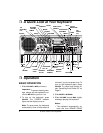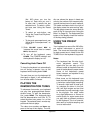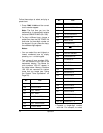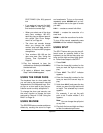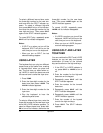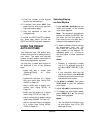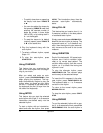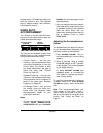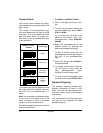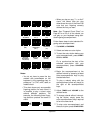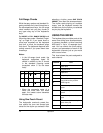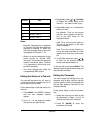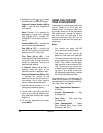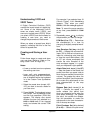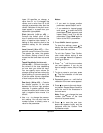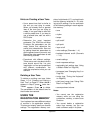
16
Operation
Concert Chord
The concert chord method lets begin-
ning keyboard players easily select and
play a chord.
The number of accompaniment keys
you press determines the type of chord
that plays. This chart shows the chord
type that plays when you press one,
two, three, or four accompaniment keys
at the same time.
The lowest note you play determines the
key of the chord. For example, if the low-
est note is C, the keyboard plays a C
chord.
Note:
You can press
any
labeled note(s)
to the right of the lowest note in the
chord to produce a minor, a dominant
seventh, or minor seventh chord.
Follow these steps to start concert chord
auto accompaniment.
1. Set
MODE
to
CONCERT CHORD
.
2. Enter a two-digit auto-rhythm num-
ber.
3. To start the auto-rhythm before the
auto accompaniment, press
START/
STOP
or
INTRO
.
Or, to synchronize the start of the
selected auto-rhythm with your
accompaniment, press
SYNCHRO/
ENDING
.
4. Begin the accompaniment at the
desired interval by pressing the
desired accompaniment key(s).
To play a melody along with the
accompaniment, press any key(s) to
the right of the accompaniment
keys.
5. Adjust the tempo and
VOLUME
to
the desired levels.
6. To change chords without interrupt-
ing the rhythm, simply press the
auto accompaniment key(s)
required to form the new chord.
7. To stop auto accompaniment and
the auto-rhythm, press
START/STOP
.
Standard Fingering
The standard fingering method uses
standard formations of three or four
notes, and lets the experienced musi-
cian play a wider variety of accompani-
ment chords.
This chart shows the 15 chord types you
can play on your keyboard by using
standard fingering.
Number of Keys
Pressed
Chord Type
Major
Minor (m)
Dominant
Seventh (7)
Minor
Seventh
(m7)
C DEFGABCDEF
C DEFGABCDEF
C DE F G AB C DE F
C DEFGABCDEF



